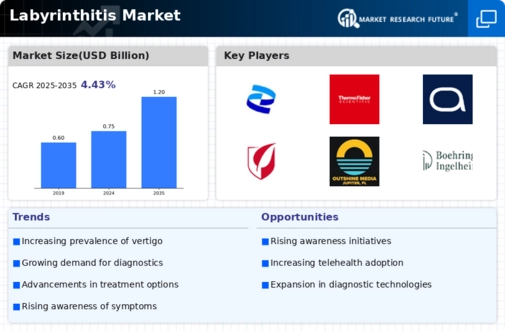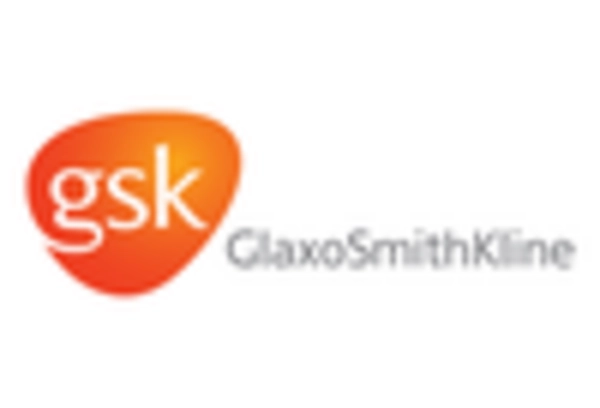Market Analysis
In-depth Analysis of Labyrinthitis Market Industry Landscape
Labyrinthitis, a condition affecting the inner ear and leading to symptoms such as vertigo, nausea, and hearing loss, exhibits a distinctive set of market dynamics. The market for labyrinthitis-related products and treatments is influenced by a combination of factors ranging from prevalence and awareness to technological advancements and regulatory frameworks. Understanding these dynamics is crucial for stakeholders, including pharmaceutical companies, healthcare providers, and policymakers. The labrynthitis disease is the most important factor that is leading the market of the specific scope. In the course of increasing prevalence of this problem we observe more requests for proven up-to-date treatments, which encourages pharmaceutical corporations to invest their money in the development and research. The market permits and potential expansion in drug development and treatments, prompting advancement in the field. Moreover, expanding the understanding of healthcare professionals and common man empowers early diagnostics and the intervention, hence leads to develop the market in a positive way. Technological progressions as well have a profound implication on the market invasion. In the evolving healthcare market, diagnostic devices and treatments that promote diagnostic accuracy and efficiency occupy a key position. Imaging modalities, elaborated as magnetic resonance imaging and vestibular function examine, help specialists make specific diagnosis which arms them with the right decision. In addition, continual innovations in drug formulation like fixed-dose combinations and patient-focused treatments such as personalized therapies also add to the vibrancy of the market as they offer the desired outcome with minimal side effects. A challenging regulatory environment is another important variable that has impact on market dynamics in the labyrinthitis market. Stringent controls around the drugs and medical devices approval as well as telling process validate the safety and efficacy of the treatments. Regulatory bodies form a critical element in the market entering for new products, thus, they are of critical importance as they may shape the competitive landscape and impact the strategies companies adopt in their outcome to seek the market share. Additionally, readjustment mechanisms is another important factor which determines in what direction is the market moving, as they definition patients’ accessibility to treatments, weighs on health providers’ financial viability. Competing drug-makers occupy the place where the market of labyrinthitis is situated. While these approaches are lifesaving and curing of a disease, clinical trials also play a crucial role in drug development.
Patient demographics and socio-economic factors also contribute to the labyrinthitis market dynamics. The prevalence of labyrinthitis may vary across different regions and populations, influencing the demand for specific treatments in those areas. Economic factors, including healthcare expenditure and insurance coverage, impact patient access to treatments and, consequently, the market's overall growth potential. Understanding and adapting to these demographic and socio-economic factors are essential for market participants to navigate and succeed in diverse markets.

















Leave a Comment